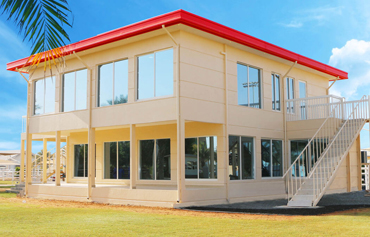Modern building facades offer a lot more than just providing shelter. This is why building envelopes have become one very popular item used in construction projects. This popularity is construction schedules, tight design, few skilled workers, strict energy codes, and facades act as weather barriers. Prefab façade systems have existed for centuries, but the use has dramatically increased in these years. Homeowners aim to solve multiple issues of construction with a single element possibly.
Improve the aesthetic appeal and save on your energy bills
A building envelope shields the building structure from damage. Protecting a construction with an envelope aids in safeguarding the building from various elements. They also support the mechanical load, and the interior is protected from exterior hazards. The coverings also offer aesthetic appeal; they have attractive finishes.
If you are looking for ways to control a construction’s climate, there is nothing better than a building envelope. If you are assembling a modular home, climate control is crucial. Such buildings require a shell that keeps away several elements from affecting the interior cooling and heating system. The interior is comfortable; there is no escaping of air or energy-wasting. This helps to control airflow, ventilation and to save on your energy bill.
Knowing the three parts of a building envelope
A building envelope’s functions can be categorized into three parts: control, support, and finish. The controlling function includes guiding the flow of all types of energy and matter. The control functionality mainly focuses on controlling air, rain, heat, and humidity. The envelope supports by resisting and transferring dynamic and structural loads. Finishing is the final step where the visual aesthetics are met. Prefab facades are manufactured inside an environmentally-controlled unit. The manufacturers use a specific approach, yet there is sufficient flexibility.
Weatherproofing qualities of building envelopes
It is essential to control the rainwater. There are various types of shields to defend against the weather, including barriers, mass storage systems, drained screens, and mass storage. A roof is mainly installed to resist water; two roofs are popular – the pitched and flat ones. The flat roofs can resist standing water, whereas pitched roofs can only shed water.
The basement is extremely vulnerable; moisture can easily enter through the floor and walls. Hence, proper drainage and basement waterproofing keeps the walls dry. Also, weatherproof building envelopes contain a moisture blockade under the floor. Also, controlling the airflow is of utmost importance to protect high air quality indoors, check the energy consumption, keep condensation away, and offer comfort.
Install a tight building envelope
There are two types of envelopes – tight and loose. The loose envelope lets in a little more natural air transfer and improves indoor air quality. Also, there is no requirement for mechanical ventilation. But loose envelopes make the building interior uncomfortable and allows less energy savings.
In comparison, a tight envelope controls air quality, humidity, energy consumption, and temperature to a greater extent. They have the least chances of experiencing mold growth and mildew due to moisture infiltration.
Get in touch with TSSC
Are you looking for a building envelope installation for your modular home in the UAE? TSSC is a renowned manufacturer of insulated panels and other construction materials. We are operating in the Middle East for more than four decades. Reach us for a discussion regarding your project.
